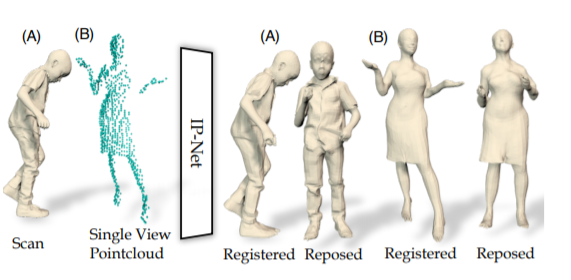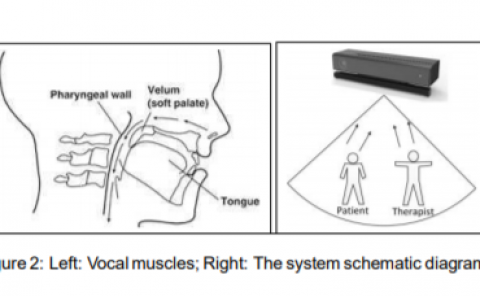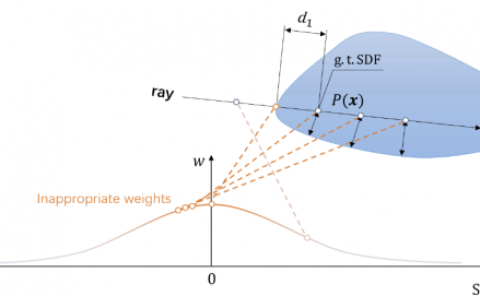Combining Implicit Function Learning and Parametric Models for 3D Human Reconstruction
PubDate: Aug 2020
Teams: Max Planck Institute for Informatics, Saarland Informatics Campus; Google Research
Writers: Bharat Lal Bhatnagar, Cristian Sminchisescu, Christian Theobalt, Gerard Pons-Moll
PDF: Combining Implicit Function Learning and Parametric Models for 3D Human Reconstruction

Abstract
Implicit functions represented as deep learning approximations are powerful for reconstructing 3D surfaces. However, they can only produce static surfaces that are not controllable, which provides limited ability to modify the resulting model by editing its pose or shape parameters. Nevertheless, such features are essential in building flexible models for both computer graphics and computer vision. In this work, we present methodology that combines detail-rich implicit functions and parametric representations in order to reconstruct 3D models of people that remain controllable and accurate even in the presence of clothing. Given sparse 3D point clouds sampled on the surface of a dressed person, we use an Implicit Part Network (IP-Net) to jointly predict the outer 3D surface of the dressed person, the inner body surface, and the semantic correspondences to a parametric body model. We subsequently use correspondences to fit the body model to our inner surface and then non-rigidly deform it (under a parametric body + displacement model) to the outer surface in order to capture garment, face and hair detail. In quantitative and qualitative experiments with both full body data and hand scans we show that the proposed methodology generalizes, and is effective even given incomplete point clouds collected from single-view depth images. Our models and code will be publicly released.


